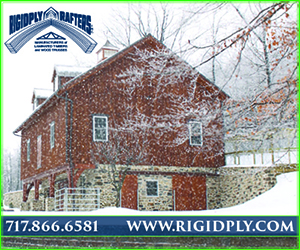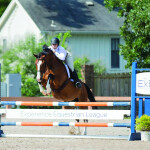Horses' dietary needs are as unique and different as humans. Managing multiple different horses' nutrition and care can be overwhelming
For the majority of my life I have managed my horses’ diets and nutrition. When I graduated college and moved home I boarded my horse, Gage, at a family farm that was self care. This meant that I had to supply his feed, and for many days I was responsible for feeding him, especially on the weekends. Gage was four, turning five, at that time so I was learning how to fuel my young Thoroughbred who I was cross training for Eventing and Jumping. He was still growing, and we hacked over a 100 acres five to six days a week. He required a diet that did not make him too hot, but provided enough fat and protein to fuel our long hacking sessions, and his muscle development. He was, thankfully, an easy keeper compared to many Thoroughbreds, and he has always had a cool and level headed personality, rarely getting anxious at any adjustment in his training.
Fast forward to the present day. I have my own farm and three horses. I am 100% responsible for their care, management, training schedule and diets, and I love the challenge. I am able to pull the knowledge from my previous veterinary tech days into how I care for my horses. All three are at different life stages, have different needs and require three different diets.
Gage is now 23- years- old and retired from riding. There might be the occasional day that I ride him, at a walk around the property, but his biggest nutritional challenge is his degenerative megaesophagus, which I have mentioned before in previous Publisher’s Notes. His megaesophagus has evolved to the point where he can no longer eat hay. A horse that can’t eat hay has many challenges, but one that is 23, can’t eat hay, that also has partial esophagus paralysis, along with a large diverticulitis in his throat with a stricture above it means: he chokes, and aspirates. The way I manage his nutrition and the way he is fed is pivotal to his existence at this moment in time.
Josie, my Mustang, is about 15-years- old. Just last year I noticed he was getting random fat pockets above his tail bone, on his sides, and under his tummy in his groin area. As a large pony, and a Mustang, his metabolism is very different from all the Thoroughbreds I have owned in the past. However, he was showing me physical signs of equine metabolic syndrome. Due to Gage not being able to eat hay we planted cool season grass in the pasture so Gage could have grass in the cooler months. However, cool season grasses have higher carbohydrates and sugars known as fructans, which if overgrazed by horses with metabolic syndromes can lead to laminitis. Great!
Kevin, my seven- year- old off the track Thoroughbred is now thrown into the mix. Kevin raced until he was four. He came to me track fit, meaning very lean. I had to transition him off his track feed, which was a diet with large portions of grain, high in carbohydrates and sugar to provide the fuel he needed as a peak racehorse. During his transition he lost a good amount of weight and muscle tone. I had to supplement with ulcer preventatives and fat, and transitioned away from the high carbohydrate grain to help ease some anxiousness and excitement he had. Since the day he came off the trailer he has had soft stools. Ulcer supplements and probiotics are two major supplements I know he must have regularly. He is also very big, standing at 17.1, and he can literally drop weight overnight. I know his tummy is extremely sensitive and I feel his hindgut has something “ticky” about it.
So I have three horses, Gage is retired, Josie is being brought into low level exercise, and Kevin is my performance horse. Gage cannot eat hay, Josie cannot have high starch feed and needs management on lush grass, while Kevin needs high amounts of feed and supplements to not only maintain weight, but prevent potential ulcer and gastric distress, and enough of the right kind of fuel to keep him in performance shape.
When thinking about keeping all three of these very different horses fed properly it can be overwhelming, but it goes back to my younger years, when I had to learn about horse health, care, and management while boarding at a self care barn.
I find nutritional needs and studies fascinating, and I hone in on tiny clues my horses give me when something seems awry with their tummies or overall health and performance. I do believe their diets are key to their health so I take equine nutrition seriously when it comes to my horses. If I only focused on my own nutrition as closely I would be much healthier myself!
This issue focuses on nutrition because, just like humans, every horse needs a personalized diet. Horses have special nutritional needs to help balance their overall health and performance levels. The supplements that I give Gage are different from the supplements Kevin receives. The grain Josie gets is very different from the grain Kevin gets. The foundations of their diets are forage, but the way I feed them, and what I feed them is directly tied to their individual needs.
Whether you are responsible for your horses’ diets or you rely on your boarding and training facility to keep your horse in peak condition, this issue is to encourage all horse owners and riders to educate themselves on their mounts’ unique nutritional needs. Discuss diet changes with equine nutritionists, veterinarians, and trainers. Research NSC levels in the grain and hay you give to your overweight horse. Evaluate the level of carbohydrates and sugars your high strung horse receives. Understand how forage keeps everything moving properly in your horse’s gut. And most importantly hone in on your horse’s behavior and body condition, especially during competition season.
Remember, “You are What you Eat,” or in this case, your horse is what he/ she eats, and if you are noticing any issues with your horse’s weight, behavior, or even energy take a closer look at his/ her nutritional plan. Sometimes this can be the best place to start in order to get the most out of your horse.









